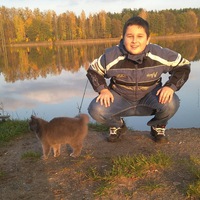
Юный любитель астрономии ясной сентябрьской ночью смотрит на звёздное небо, находясь неподалёку от
Москвы. Что из перечисленного он может увидеть? 0
0
 0
0
Ответы на вопрос
 Внимание! Ответы на вопросы дают живые люди. Они могут содержать ошибочную информацию, заблуждения, а также ответы могут быть сгенерированы нейросетями. Будьте внимательны. Если вы уверены, что ответ неверный, нажмите кнопку "Пожаловаться" под ответом.
Внимание! Ответы на вопросы дают живые люди. Они могут содержать ошибочную информацию, заблуждения, а также ответы могут быть сгенерированы нейросетями. Будьте внимательны. Если вы уверены, что ответ неверный, нажмите кнопку "Пожаловаться" под ответом.

Ответ:
Можно наблюдать весенне-летний треугольник из звезд:Вега,Денеб и Альтаир, Множество созвездий северного полушария а чуть позже немного созвездий южного.
Планеты: Венера сразу после захода солнца
Юпитер, Сатурн, Уран и Нептун УКРАШАЮТ ночное время
меркурий не виден из за того что он рядом с солнцем и марс точно также
Объяснение: это только основные
 0
0
 0
0

What a young astronomy enthusiast can see on a clear September night near Moscow?
A young astronomy enthusiast, on a clear September night near Moscow, can observe various celestial objects in the night sky. Here are some things they might be able to see:
1. Stars: The young enthusiast can observe numerous stars in the night sky. Depending on the level of light pollution in the area, they may be able to see a wide range of stars, including bright ones like Sirius, Vega, and Betelgeuse.
2. Constellations: They can also identify and trace different constellations. Some prominent constellations visible in the September sky from the northern hemisphere include Ursa Major (the Big Dipper), Cassiopeia, Cygnus, and Pegasus.
3. Planets: If there are any visible planets during that time, the young enthusiast might be able to spot them as well. The visibility of planets depends on their current positions in their orbits. For example, in September 2023, Jupiter and Saturn are visible in the evening sky, while Mars and Venus are visible in the early morning hours.
4. The Moon: If the Moon is visible during that time, the young enthusiast can observe its different phases and features, such as craters and lunar seas.
5. Meteor Showers: If there happens to be a meteor shower during that time, the young enthusiast might be lucky enough to witness shooting stars streaking across the sky. Some notable meteor showers in September include the Perseids and the Aurigids.
It's important to note that the visibility of celestial objects can be affected by factors such as light pollution, weather conditions, and the observer's location. Therefore, the young enthusiast's ability to see these objects may vary. Nonetheless, stargazing can be a fascinating and rewarding experience, allowing them to appreciate the beauty and vastness of the universe.
*Note: The information provided above is based on general knowledge about astronomy and stargazing. For more specific and up-to-date information about celestial events and visibility, it is recommended to consult astronomy resources, star charts, or astronomy apps.*
 0
0
 0
0
Похожие вопросы
Последние заданные вопросы в категории Астрономия
-
Математика
-
Литература
-
Алгебра
-
Русский язык
-
Геометрия
-
Английский язык
-
Химия
-
Физика
-
Биология
-
Другие предметы
-
История
-
Обществознание
-
Окружающий мир
-
География
-
Українська мова
-
Информатика
-
Українська література
-
Қазақ тiлi
-
Экономика
-
Музыка
-
Право
-
Беларуская мова
-
Французский язык
-
Немецкий язык
-
МХК
-
ОБЖ
-
Психология
-
Физкультура и спорт
-
Астрономия
-
Кыргыз тили
-
Оʻzbek tili



















